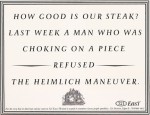38 Ways To Write Better Headlines On Your Next Landing Page, Sales Letter, Or Blog Post
Your headline has only one job—to stop your prospect and compel him to read the second sentence of your ad. – Eugene Schwartz, “Breakthrough Advertising”
If you haven’t heard of him, Eugene Schwartz was one of the most successful copywriters and direct-mail advertisers ever. He was responsible for some of the most famous headlines in direct mail history.
Headlines like: “Give Me 15 Minutes and I’ll Give You a Super-Power Memory.“
He also also wrote 10 books and assembled one of the leading collections of contemporary art in the United States.
It pays be able to sell like he did…
What Can This Renaissance Man Teach You About Writing Better Headlines?
In Breakthrough Advertising, Schwartz lays out strategies and principles that made him a fortune and can help you do the same. If you haven’t read the book yet, I can’t recommend it highly enough. I’m sure I will discuss some of Schwartz’s other lessons in upcoming articles.
On my third time through, one of his sections on headlines caught my eye. Finding out how to write better headlines and putting them into action will turn more traffic into leads and customers, as well as drastically increase the chances of people reading and sharing your content.
Even if you’re already familiar with the basic principles of writing killer headlines, you can take of Schwartz’s awesome advice to tweak them and make them even better.
Schwartz offers… not 1. Not 10. But 38 tactics!
Here they are, complete with brief explanations and examples…
Eugene Schwartz’s 38 Ways To Write Better Headlines
1. Measure the size of the claim
Specific claims are more compelling than general ones. People don’t just want to know your business can help them solve a problem; they want to know just how much you can help them.
Being specific makes the promises within your headline more realistic and believable. It gives your prospects the impression that you’ve done your homework.

Image source: Social Triggers
Breakthrough Advertising Examples: “I Am 61 Pounds Lighter…”; “Who Ever Heard of 17,000 Blooms From a Single Plant?”
2. Measure the speed of the claim
There’s a reason shortcuts and get rich quick schemes are (and always will be) popular. If someone comes to you with a problem, and they want it gone so bad they’re actually thinking about paying you to make it go away, there’s no doubt they’d rather have the problem gone sooner rather than later.
The faster the promised results and the less work involved on their end, the more compelling your headline becomes.
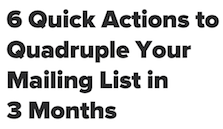
Image source: ThinkTraffic
Breakthrough Advertising Examples: “Feel Better Fast!“; “In Two Seconds, Bayer Aspirin Begins To Dissolve in Your Glass!”
3. Compare the claim
Comparing your claim to another, less attractive option is a great way to position your product or service in the marketplace. Not only are you promising to deliver a desired result; you’re promising to do it better, faster, or cheaper than your competitors.
Comparisons create a reference point or psychological anchor in your prospects’ minds. This affects how they value your offer. Your business might not look like a diamond on its own, but it can shine if you present it along with another less appealing option.

Image source: Boost Blog Traffic
Breakthrough Advertising Examples: “Six Times Whiter Washes!”; “Costs up to $300 Less Than Many Models of The Low-Priced Three!”
4. Metamorphize the claim
Don’t stick to boring, cliched descriptions of the results you’re promising to deliver. That language won’t catch people’s attention. And if you don’t catch them with the headline, they’re Gone Baby Gone.
If you’re selling a diet pill, don’t tell your prospect it will make them “lose weight.” Tell them it will “burn stubborn belly fat” or “sculpt the body they always wanted” or “rediscover high school skinny.” The result is the same, but the second way hits emotional buttons and gets more attention.
Note: I wouldn’t get too carried away with this one. Web users are inundated with hyped up, “salesly” language, so they might not respond well to your headline if you overboard.
Image source: Zach Even-Esh
Breakthrough Advertising Examples “Banishes Corns!”; “Melts Away Ugly Fat!”
5. Sensitize the claim by making the prospect feel, smell, touch, see or hear it
People make buying decisions with their emotions, and then justify those decisions with logic. A great way to tap into your prospects’ emotions is to paint a picture with your headline that engages their senses.
Make your prospect feel how good it will feel to solve their problem, and then support that feeling with logic later on in your body copy. It’s much more persuasive than jumping into a bunch of facts and statistics right away.
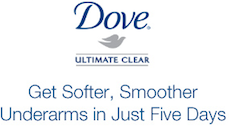
Image source: Wal Mart
Breakthrough Advertising Examples: “Tastes Like You Just Picked It!”; “The Skin You Love To Touch!”
6. Demonstrate the claim by showing a prime example
You know those cheesy infomercials? They’re corny, but they sell.
And why do they sell?
They don’t just talk about what the product can do… they show you. Your prospects are naturally skeptical. If you can cite an example of someone who’s already used your product or service with great success (even if it’s you), you can ease people’s doubts and loosen up their wallets.

Image source: Source Wave
Breakthrough Advertising Examples: “At 60 Miles an Hour, The Loudest Noise in This Rolls Royce Is The Electric Clock!”; “Jake Lamotta, 160 Pound Fighter, Fails to Flatten Mono Paper Cup!”
7. Dramatize the claim, or its result
People relate to other people more than stale numbers. Your prospects are no different. If you dramatize whatever you promise to deliver, it makes it easy for your prospects to imagine how they could live that drama. This gets them more receptive to diving in to the rest of your ad.

Image source: New Straits Times
Breakthrough Advertising Examples: “Here’s an Extra $50, Grace – I’m Making Big Money Now!”; “They Laughed When I Sat Down at The Piano – But When I Started to Play…”
8. State the claim as a paradox
Paradoxes in headlines are great because they toy with your prospects’ expectations. Ads fall into predictable patterns. When you disrupt the pattern you stand out instantly… which is exactly what you want out of your headline!
Another benefit: paradoxes arouse curiosity in your prospects’ minds. Because your statement doesn’t make sense on its face, your prospects are forced to read on in hopes of resolving the discrepancy.

Image source: Quick Sprout
Breakthrough Advertising Examples: “How a Bald-Haired Barber Saved My Hair!”; “Beat the Races by Picking Losers!”
9. Remove limitations from the claim
Your prospects have a problem. Maybe they don’t expect to get red of it without a hassle. If only there was an easier way…
That’s where you come in. Remove a common sticking point in your headline, and your prospects get curious to read more to find out how you can do it.

Image source: Nerd Fitness
Breakthrough Advertising Examples: “Shrinks Hemorrhoids Without Surgery!“; “You Breathe No Dusty Odors When You Do It With Lewyt!”
10. Associate the claim with values or people with whom the prospect wishes to be identified
Who are your ideal prospects’ role models? Bring up those people in your headline, and offer a solution to a problem that brings your prospects closer to becoming those role models.
Doing this adds also adds elements of authority (see #14) and exclusivity (#17). Both of those things make your prospects more receptive to reading the rest of your ad.

Image source: Fitness Black Book
Breakthrough Advertising Examples: “Mickey Mantle Says: Camels Never Bother My Throat!”; “9 Out of 10 Decorators Use Wunda-Weave Carpets for Long Life at Low Cost!”
11. Show how much work, in detail, the claim does
Laying out just how much your offer will do is a great way to increase: 1) the value at which prospects perceive i; and 2) their likelihood of reading more.
Don’t be vague about what your offer does. Spell out all the obstacles your business can help people overcome. Your prospects will wonder how your product/service could possibly do so much (arouses curiosity) and your price point will seem like a bargain.
Image source: Blog Tyrant
Breakthrough Advertising Examples: “Now! Relief From All 5 Acid-Caused Stomach Troubles – In Seconds!”; “Believes Congestion in All 7 Nasal Passages Instantly!”
12. State the claim as a question
There’s no resistance to answering a simple question. It opens a little psychological “loop” in our minds, and we feel compelled to answer the question and close the open loop.
So set your prospects up with a softball question. Get them to agree with you and nod their head from the very beginning. It’s a great way to build enough momentum to carry them over into the rest of your copy.

Image source: Man vs. Debt
Breakthrough Advertising Examples: “Who Else Wants a Whiter Wash – With No Hard Work?”; “Could You Use $25 a Week Extra Income?”
13. Offer information about how to accomplish the claim
“How to” headlines have been around forever. And they aren’t going anywhere anytime soon because they flat out work.
Your prospects want to get rid of their problem, but they can’t unless they know how. You can use your headline to imply that the rest of your copy contains the valuable information your prospects need. Then it’s just a matter of convincing them to take you up on your solution instead of your competitors’.

Image source: KISSMetrics
Breakthrough Advertising Examples: “How To Win Friends and Influence People!”; “Here’s What To Do To Get Rid of Pimples Fast!”
14. Tie authority into the claim
A credible message is a persuasive message. Tying your claim to well-respected authorities in your niche makes them more believable, and your prospects more receptive.
There’s an element of curiosity at play here, too; your prospects will want to know if the authorities actually follow the advice they typically offer the public. Of course, they’ll have to read more of your copy to find out.

Image source: New York Times
Breakthrough Advertising Examples: “Boss Mechanic Shows How to Avoid Engine Repair Bills!”; “Here’s What Doctors Do When They Feel Rotten!”
15. Before-and-after the claim
Using a before-and-after element gives your prospects a clear reminder of just how much their lives could improve… if only they could rid of their problem.
People don’t just want to read your claims. They want you to show them what happened to others who already used your product or service, and imagine how different their lives could be if they did the same.
Image source: Lifehacker
Breakthrough Advertising Example: “With Coldene a Child Gets Over a Cold in Five Days!”
16. Stress the newness of the claim
People are obsessed with “new.” It doesn’t matter if it’s something we’ve never seen before, or a new angle on an old method or technique. These kind of headlines get noticed and make people curious to read more.
Image source: Viper Chill
Breakthrough Advertising Examples: “Announcing! Guided Missile Spark Plugs!”; “Now! Chrome Plate Without Heat, Electricity, Machinery!”
17. Stress the exclusivity of the claim
People want to be a part of cool groups. Using exclusivity instantly positions your business separate from your competitors. And it motivates your prospects to read more of your web copy. Especially if doing business with you puts them in a “special club” that not everyone else can join.

Image source: Unbounce
Breakthrough Advertising Examples: “Ours Alone! Persian Lamb Originals – $389.40!”; “Only Gleem Has GL-70 to Keep Teeth Clean All Day Long With One Brushing!”
18. Turn the claim into a challenge for the reader
This is a cool tactic because it accepts the inevitable prospect’s skepticism and runs with it. Instead of just saying how great your offer is, you put it in your prospects’ hands to prove it to themselves.
It also opens a healthy dose of curiosity because the prospects want to know if their initial skepticism was justified. The only way to find out is to read more of your copy.

Image source: Diary of an Ad Man
Breakthrough Advertising Examples: “Which Twin Has the Toni? And Which Has the $15 Permanent?”; “Does She Or Doesn’t She? Hair Coloring So Natural Only Her Hairdresser Knows for Sure!”
19. State the claim as a case-history quotation
Case studies help prospects relate to the promises you’re making on a personal level. People don’t just want to hear you talk about how great your product is, they want to hear how it has already changed people’s lives.
Doing this also makes your claims more believable. This has worked for people it the past, so it can work for your new prospects too.

Image source: Xtina81
Breakthrough Advertising Examples: “Look, Mom – No Cavities!”; “Would You Believe It – I Have a Cold!”
20. Condense the claim – interchange your product and the product it replaces
This one’s great if your product or service makes dated, clumsy solutions obsolete. You give people a reference point (the old, inefficient solutions) and proceed to show them how your offer gets rid of those inefficiencies.
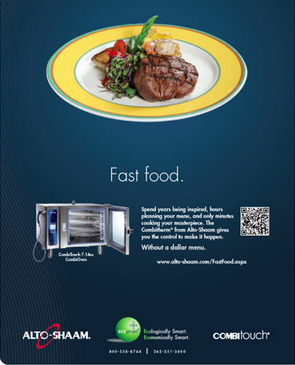
Image source: Alto-Shaam
Breakthrough Advertising Examples: “Now! A Ring and Piston Job in a Tube!”; “Pour Yourself a New Engine!”
21. Symbolize the claim – replace the direct statement or measurement of the claim with a parallel reality
This is another way to arouse people’s curiosity and pump up the dramatic flair. People want the results you’re promising to deliver, but your promise becomes that much more intriguing when you take it to a whole new level.
Note: I wouldn’t get too abstract with this. Trying to be “deep” or witty might make your prospects lose sight of what your product/service actually does… which weakens your headline.
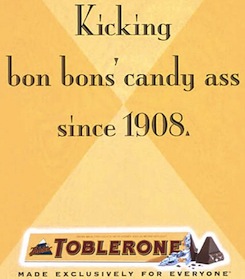
Image source: Coloribus
Breakthrough Advertising Examples: “Starting Next Tuesday, The Atlantic Ocean Becomes Only One-Fifth as Long!”
22. Connect the mechanism to the claim in the headline
How does your business deliver the results your prospects want (or, as Schwartz calls it, the “mechanism”)? It’s good to use your headline to advertise your methods if they’re innovative, dramatic, and imply little work on the prospects’ part.

Image source: Berry on Dairy
Breakthrough Advertising Examples: “Floats Fat Right Out of Your Body!”; “Feeds Waste Gas Fumes Back Into Your Engine!”
23. Startle the reader by contradicting the way he thinks the mechanism should work
People can’t handle contradictions. If your headline catches someone’s attention who’s already spent time looking for solutions, they already have preconceived ideas about the difficulty, cost, and time involved.
Playing with your prospects’ expectations creates a sense of mystery that can only be resolved in one way: reading the rest of your copy.

Image source: Peter Shallard
Breakthrough Advertising Examples: “‘Hit Hell Out of The Ball With Your Right Hand,’ Says Tommy Armour!”
24. Connect the need and the claim in the headline
Link your prospect’s problem and the solution you’re offering in the headline. Original? Not at all… but it’s a great way to get your target market’s eyeballs on your copy.
The interested prospects will want to know more about the solution you presented. How does it work? How long does it take? Etc. You answer those questions in your body copy.
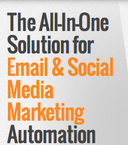
Image source: Best Blogging Tips Online
Breakthrough Advertising Examples: “There is Only One Solution to An Advertising Problem : Find The Man!”
25. Offer information in the ad itself
Educating your prospects about the problem, common misconceptions, and the solution is a hallmark of direct response advertising and content marketing.
It gets the right audience’s attention, and gets those people reading more because they have a vested interest in finding out more about the problem and how to fix it.
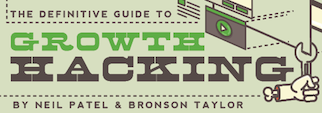
Image source: QuickSprout
Breakthrough Advertising Examples: “Why Men Crack…”; “What Everybody Ought to Know About This Stock and Bond Business!”
26. Turn the claim or the need into a case history
This goes back to the idea of people relating more with other people than with numbers. It’s more convincing to talk about someone who had the same problems your prospects have and overcame them than just making promises about all the cool stuff your business can do.
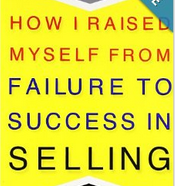
Image source: Amazon
Breakthrough Advertising Examples: “Aunt Meg, Who Never Married…”; “Again She Orders – ‘A Chicken Salad, Please.'”
27. Give a name to the problem or need
If you can describe your prospect’s problem in an agonizing, memorable way, do it! You want your headline to make them feel that pain… and then you swoop in and show them how your business can make it go away.
Image source: Elixir Wanted
Breakthrough Advertising Example: “When You’re Weary With Day-Time Fatigue, Take Alka-Seltzer.”
28. Warn the reader about possible pitfalls if he doesn’t use the product
“Warning” headlines are great because they remind people that their pain won’t go away (and could even get worse) if they leave their problem unresolved or approach one of your competitors.
A good warning headline motivates your prospects to take care of their problem right now… and that starts by reading the rest of your copy.
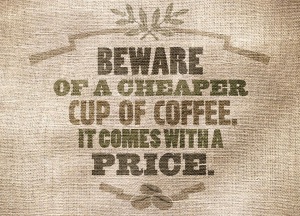
Image source: David Cameron’s On Brands Blog
Breakthrough Advertising Example: “Don’t Invest One Cent of Your Hard-Earned Money Until You Check This Guide!”
29. Emphasize the claim by its phraseology – by breaking it into two sentences, or repeating it, or a part of it
People love rhymes, repetition, and alliteration. That’s why it’s so much easier to remember the choruses in songs than the rest of the lyrics.
Phrase your headline in a catchy, unique way and it will stand out. That will get your prospects interested enough to read more.
Image source: Andy Horner
Breakthrough Advertising Examples: “A Man You Can Lean On: That’s Kloper-Man!”; “Nobody But Nobody Undersells Gimbel’s!”
30. Show how easy he claim is to accomplish by imposing a universally-overcome limitation
If what you’re selling requires very little to zero effort from the prospect’s part, you can frame your headline to emphasize the simplicity of your approach.
This approach also fuels people’s curiosity because they wonder how it could really be that easy. And when they wonder… they read more to find out.

Image source: Barnes and Noble
Breakthrough Advertising Example: “If You Can Count to Eleven, You Can Increase Your Speed and Skill at Numbers!”
31. State the difference in the headline
What separates you from all your competitors? That’s your unique selling proposition (or “USP”.) Pointing out your USP in your headline gets people’s attention and positions you in a special place in their minds.
A lot of your competitors come close… but they don’t do everything you can and they don’t do it the same way. Identify that little edge that sets you apart and highlight it.
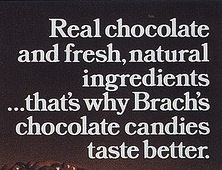
Image source: Old Advertising
Breakthrough Advertising Example: “The Difference in Premium Gasolines is Right in the Additives!”
32. Surprise your reader into realizing that former limitations have now been overcome
If your prospects have looked for fixes to their problem, they already have ideas about the solution’s limitations. They assume your particular solution comes with those same limitations…
So when you shatter that assumption, you make them curious: what makes this offer different? And they read on to find out.

Image source: Bodybuilding.com
Breakthrough Advertising Example: “See What Happens When You Crush a Hartman DC-8? Nothing!”
33. Address the people who can’t buy your product
We want what we can’t have, and we can’t stand the thought of missing out on something great.
This type of reverse psychology works great, and it’s a way to challenge your prospects to reading more. Most of them will.
Image source: Active Rain
Breakthrough Advertising Example: “If You’ve Already Taken Your Vacation, Don’t Read This. It’ll Break Your Heart.”
34. Address your prospect directly
Of all the sales messages you’re exposed to on a daily basis, how many do you feel speak to you directly? That happens to me maybe once or twice a year. All the others aren’t as effective because it’s obvious they’re directed at Everyone (with a capital ‘E’.)
Addressing your prospects directly: 1) stands out; 2) gets their attention; and 3) compels them to read more because you’re offering a solution tailored just for them.

Image source: Bhatnaturally
Breakthrough Advertising Example: “To the Man Who Will Settle for Nothing Less Than The Presidency of His Firm.”
35. Dramatize how hard it was to produce the claim
This goes back to your USP (see #31). If the thing that separates you from your competitors is remarkable (and it should be), go ahead and play it up.
Maybe you sell furniture and use special Teak wood imported from a Burmese village. Or you make all the chocolates you sell by hand. Emphasizing the difficulty or expense of doing these things gets the right kind of attention.

Image source: Amazon
Breakthrough Advertising Example: “When Jens Finished Designing This Candleholder We Had to Invent a Whole New Kind of Candle.”
36. Accuse the claim of being too good
I love this one because it recognizes people’s natural skepticism. You don’t promise a ridiculous result and ask them to suspend their disbelief; you recognize that people might not believe you at first when you discuss the results you’ve been getting.
It’s a challenge to the prospect. They have to read on to see if their skepticism is warranted, or if your copy can convince them otherwise. Either way, they have to keep on reading… which is exactly what you want!
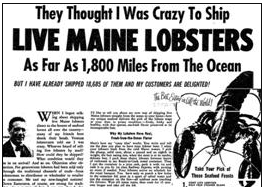
Image source: Info Marketing Blog
Breakthrough Advertising Example: “Is It Immoral to Make Money This Easily?”
37. Challenge the prospect’s present limiting beliefs
Toys with expectations? Check. Removes limitations? Check? Arouses a ton of curiosity? Check.
People have predefined beliefs about the world around them and especially themselves. When you shake them up, they have to read on to see what you’re talking about.
Image source: Inbound Pro
Breakthrough Advertising Example: “You Are Twice as Smart as You Think.”
38. Turn the claim into a question and answer
This ones lays out: 1) what’s been bothering the prospect; and 2) your solution before they even dive get into the rest of your copy. It’s a great way to screen for the right prospects, get their attention, and make them curious about your solution.

Image source: Yours Truly
Breakthrough Advertising Example: “You Don’t Know What’s Under the Hood and You Couldn’t Care Less as Long as Your Car Runs Smoothly. Who Should You See if it Doesn’t?… Someone Who Cares – United Delco.’
Your Turn
Phew. That’s a ton of advice from one of the greatest copywriting legends ever. There’s no need to try and put it into action all at once. Just one or two of these tweaks can drastically improve your copy’s conversion rate and put a lot more money in your pocket.
Treat each of Schwartz’s suggestions as a different tool in your “headline toolbox.” That way you’ll never run out of fresh ideas to innovate, test, and optimize your headlines for the most profit.
Which of these tips is your favorite? Which ones have worked well for you in the past? Leave me a comment below and let me know. Best of luck learning how to write better headlines!
